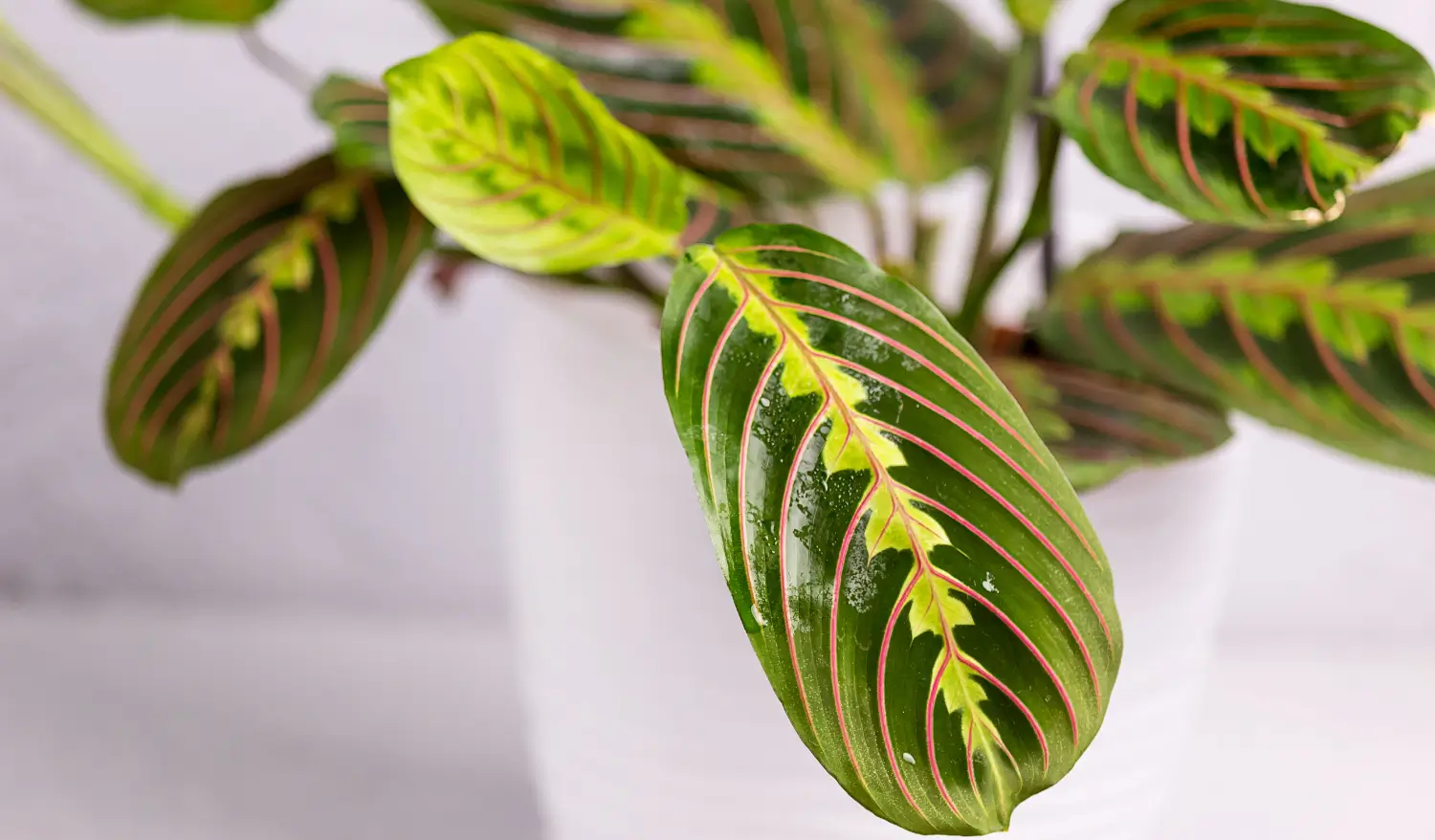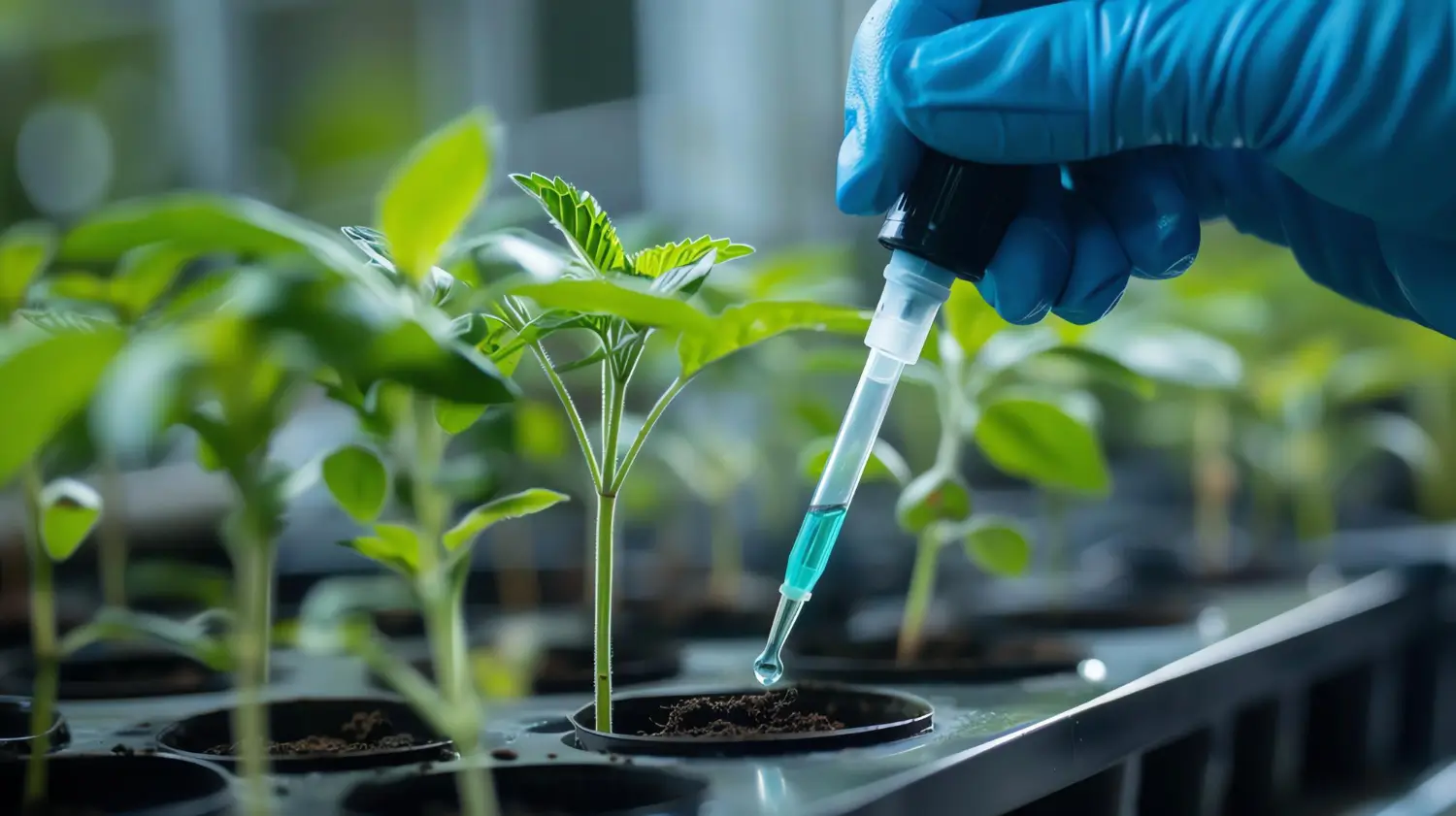
April 28, 2025

Plants are an excellent way to increase the beauty and ambiance of any place. Each plant has its own qualities; some improve the aesthetic appeal, while others offer ornamental properties. However, very few plants possess both of these characteristics; one such plant is the Calathea plant.
Calathea are popular houseplants known for their beautiful leaves. Their paddle-shaped foliage is strikingly patterned and colored. These easy-to-grow plants are great for creating an urban jungle atmosphere.
Growcycle offers the right lawn fertilizers for lush green lawns and plants, including Calathea. These fertilizers can improve plant growth by providing essential nutrients. The article below explores vital information about the Calathea plant, including its characteristics and care routine.
Calathea is a family of flowering plants belonging to the Marantaceae family. They are often called Calatheas or prayer plants. Their beautiful leaves bring a splash of color to the home. Here are some of their botanical features.
Here is a comparison of different types of Calathea plants:
| Types | Leaf Features | Size | Light Requirements | Watering Requirements | Special Needs |
|---|---|---|---|---|---|
| Calathea Ornata | Dark green leaves with pink, pinstripe-shaped patterns | 2-3 feet | Indirect bright light | Moist soil | High humidity; wipe leaves to increase luster. |
| Calathea Makoyana (Peacock Plant) | Light green leaves with a dark green feathery design | 1-2.5 feet | Indirect bright light | Moist soil | Avoid cold drafts, and spray leaves regularly |
| Calathea Lancifolia (Rattlesnake Plant) | Long, wavy-edged leaves with dark green dots | 1-2 feet | Medium to bright indirect light | Water when the topsoil is dry | It needs warm, humid conditions |
| Calathea Medallion | Round leaves with dark green, silvery, and purple patterns | 2 feet | Medium, indirect light | Water evenly and avoid overwatering | It requires high humidity and avoids fluoride in water |
| Calathea Zebrina | Zebra-like stripes in green and light green | 1.5 - 2 feet | Bright, filtered light | Water thoroughly to keep moist | Prefers constant humidity and warmth |
| Calathea Rufibarba (Furry Feather) | Long, slender leaves with a silky texture | 2-3 feet | Indirect bright light | Water when the soil is dry | Can tolerate slightly lower humidity |
| Calathea White Fusion | Leaves with violet, green, and white variegation | 1-2 feet | Medium to bright indirect light | Moderate water | Very sensitive to changes in moisture and overwatering |
| Calathea Roseopicta (Rose Painted) | Big, spherical leaves with a pink stroke in the middle | 1-2 feet | Indirect medium light | Water to keep it moist | For uniform growth, rotate the pot |
Here are some common benefits of having the Calathea plant in the garden:
Calathea plants are easy to grow and propagate. Here are some useful methods for propagating these plants:
Dividing a Calathea plant works best when it is mature and has several stems. Gardeners need to separate the plant into smaller sections, making sure each one has some roots. This method keeps the plant looking good and avoids overcrowding in the pot.
The best time to divide the plant is early spring. This gives it a whole growing season to settle into its new home. Here are some steps to do it:
Stem cuttings are also a great way to propagate the Calathea plant. This method involves snipping off a healthy stem and getting it to root in either soil or water. Rooting can take a while, but the results are worth it. Here is how to do it:
Here are some steps that a gardener should follow immediately after planting the Calathea plant:
Here are some pro tips to keep the Calathea healthy and thriving:
Calatheas love filtered light or shade, which is similar to their natural vibe. They hang out under tree canopies on the jungle floor, where the sunlight is nice and dappled. However, keep the Calathea away from direct sunlight, as too much light can scorch the leaves and make those bright patterns fade away.
The best spot is usually near an east, south, or west-facing window where the sun is indirect. Don’t forget to rotate the plant so all sides get a fair share of light.
For growing Calathea, it is best to use healthy garden soil, including loamy soil packed with humus and some organic stuff mixed in, like compost. If keeping it in a pot, choose a potting mix with peat moss because it’s light and helps with airflow.
Ensure the soil is slightly acidic to neutral, around 6.0 to 7.0 pH, so the plant stays healthy and happy.
It is important to use soil that stays consistently moist but not soaked. Depending on the climate, gardeners may need to water the plant every few days. This plant does not tolerate certain minerals and chemicals often found in tap water.
Using tap water can turn the leaves yellow. To avoid this, use rainwater or filtered water instead. If tap water is essential, let it sit overnight. This will help remove chlorine and fluoride, which can harm the plant.
Calathea plants don’t like temperatures below 60°F. They thrive in warm spots, ideally between 70°F and 85°F, which helps them grow and look their best.
When it comes to humidity, these plants love it when the levels are at 50% or more. Gardeners should set up a humidifier nearby to give them that moisture boost. Another option is to place the Calathea on a pebble tray filled with water, but make sure the bottom of the pot isn’t touching the water to avoid root rot.
These plants love humid spaces, so they are perfect for bathrooms or terrariums with more natural moisture. Remember, if using a terrarium, make sure it’s big enough to give those wide leaves room to grow.
To make Calathea green and beautiful, give it a monthly dose of liquid-balanced fertilizer at half the strength during spring, summer, and fall. Follow the instructions on the label for the best results. In winter, skip the fertilizer, as the plant slows down and doesn’t need as much.
Calathea plants aren’t picky when it comes to pruning. A gardener only needs to snip off any brown, droopy leaves as they die off. Keeping the plant looking neat and nice is important since those leaves will eventually fall off on their own anyway.
When planting Calathea, choose an 8- or 10-inch pot with large drainage holes, preferably an unglazed clay pot, as this helps excess moisture evaporate. As the roots start filling up the container, plan to repot the plant every few years into a pot that’s 1 to 2 inches bigger than the one it’s in.
The best time to repot is in the spring or early summer while the plant grows. Follow the same steps as when dividing a Calathea, including giving it a good watering a day or two before repotting.
If the nighttime temperatures are consistently above 60°F during the summer and the area is humid, it's fine to put the Calathea houseplant outside for the season. Let it soak up some fresh air and sunshine.
Keep an eye on the weather, and bring it back inside when fall and winter roll in as temperatures will start dropping. Also, remember to check the leaves and the pot for any pesky bugs to keep the plant happy and healthy.

Liquid fertilizers have become an essential tool in modern gardening. They offer a fast and effective method for delivering vital nutrients to plants. In contrast to granular fertilizers, which release nutrients gradually, liquid fertilizers offer instant nutrient availability.
LEARN MORE →Here are some problems that a gardener might face while dealing with the Calathea plant:
Yes, Calathea is a great indoor plant because of its stunning leaves. It does well in low to medium light and helps clean the air. It also adds a nice tropical vibe and loves humid places, making it perfect for home settings.
Calathea is known as a prayer plant because its leaves fold up at night, looking like hands in prayer. This cool nighttime motion is triggered by changes in light, which makes the plant even more interesting.
The Calathea plant symbolizes fresh beginnings, thankfulness, and resilience with its cool leaf movements and vibrant patterns. It’s a favorite for adding positive energy and elegance to any indoor setting.
The Calathea plant is a beautiful and low-maintenance addition to any space. Its vibrant leaves and occasional flowers not only look stunning but also help improve air quality. To stay healthy, Calathea needs bright, indirect light, good-quality soil, and proper watering. With regular care, it can thrive for many years.
Growcycle provides expert advice on caring for plants like the Calathea. Gardeners and homeowners can follow these tips to grow lush, healthy Calatheas and increase the beauty of their gardens or indoor spaces.
Disclaimer: This material is for informational purposes only and should not be relied on for legal, medical, financial, or any other form of professional advice.
Sources:
1. Wiki - Calathea
2. Livelyroot - Calathea plant